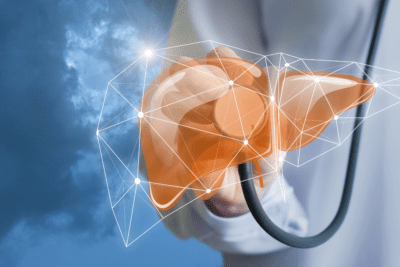Even though liver damage can appear to be subtle initially, it can result in significant health issues. The main symptoms consist of jaundice, fatigue, dark urine, loss of appetite, weight loss, abdominal pain, itchy skin, pale stool, nausea, and easy bruising. It’ll be a good idea to maintain a balanced diet and exercise regularly to safeguard the liver. Moreover, you should restrict your consumption of alcohol and stay away from drugs. That being said, we have articulated the top 10 warning signs of liver damage and how to protect the liver in this blog post.
10 warning signs of liver damage
Unexplained weight loss
This can be a significant warning symptom of liver damage. This sign is usually accompanied by fatigue and loss of appetite. Unexplained weight loss indicates the inability of the liver to process nutrients successfully.
May You Like This – How to Prevent Dandruff in Winter Naturally?
Loss of Appetite
Loss of appetite can also be a warning symptom of liver damage. It showcases the impaired function of the liver when it comes to processing nutrients.
Confusion
Confusion indicates possible hepatic encephalopathy. This condition can happen because of the inability of the liver to filter toxins effectively. It can affect the function of the brain as well.

Easy Bruising
One notable symptom of liver damage is easy bruising which reflects impaired clotting of blood because of the liver producing less amounts of clotting factors. This particular symptom indicates liver dysfunction to a large extent.
Pale Stool
It can also be a warning symptom of liver damage. In this case, there is a lack of bile flow to the intestines from the liver. Immediate medical attention is required to treat this problem.
Spider Angiomas
This particular warning symptom of liver damage is characterized by blood vessels that resemble small spiders, and these are visible underneath the skin.
Abdominal Pain
Abdominal pain can also be a notable warning symptom of liver damage. One can usually feel this pain in the upper right part of the abdomen where the liver is positioned.
Itchy Skin
This is a typical warning symptom of liver damage. Also, referred to as pruritus, this condition can cause lots of distress and immediate medical attention will be required.
Swelling
Inflammation can happen, particularly in the legs and abdomen while suffering from liver disease. This condition indicates the retention of fluid, and it is called ascites or edema.
Persistent Fatigue
Lastly, we will talk about persistent fatigue which can be a warning symptom of liver damage as well. It can happen because of the inability of the liver to produce energy by storing glycogen.

How to protect the liver
Maintain a Balanced Diet
It’ll be imperative to maintain a balanced diet that is packed with vegetables, fresh fruits, as well as whole grains if you want to safeguard your liver from different types of ailments. These food items will provide the liver with antioxidants and essential nutrients to support liver function. Furthermore, these will also help in detoxification. Try to stay away from saturated fats, processed food items, and sugar if you want to prevent conditions such as fatty liver disease.
Avoid Toxins
Make it a point to avoid toxins if you want to safeguard your liver from getting damaged. It consists of minimized alcohol consumption, reduced smoking, minimized environmental pollutants, as well as staying away from harmful chemicals. You can maintain the detoxification function of the liver in the best possible way by reducing these types of stressors. Moreover, it will also help to improve your overall health.
Get Vaccinated
Getting vaccinated against conditions like hepatitis A and hepatitis B can play an important role in protecting the liver from various types of viral infections. These vaccines will help to prevent hepatitis viruses from getting transmitted, and this will minimize the risk of suffering from chronic liver ailments like liver cancer and cirrhosis.
Practice Good Hygiene
It’ll be a good idea to practice good hygiene like handwashing regularly and also maintaining cleanliness when it comes to personal activities. This will help to prevent infections from spreading that can be harmful to the liver.
Conclusion
Being the largest organ in the human system, it is our responsibility to safeguard the liver in the best possible way. Hopefully, after going through this article, it is clear to you how to protect the liver. Before that, we have also mentioned 10 warning signs of liver damage that should be useful to you as well. Stick to the guidelines mentioned in this article to lead a stress-free and happy life free from liver ailments.

